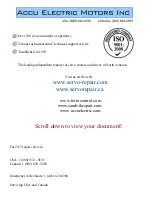
8 Additional information
BU 0200 en-US-4920
261
Pos : 748 /Anleit ungen/El ektr onik /FU und St art er/8. Z us atzi nform ati onen/Syst embus [SK 1x 0E, SK 2xx E] @ 2\m od_1347445356391_14638. docx @ 46180 @ 25555 @ 1
8.6 System bus
The device and many of the associated components communicate with each other via the system bus.
This bus system is a CAN bus with CANopen protocol. Up to four variable frequency drives and their
components (field bus module, absolute encoder, I/O modules etc.) can be connected to the system
bus. Integration of the components into the system bus does not require any specific knowledge of the
bus on the part of the user.
Only the proper physical configuration of the bus system and if necessary the correct addressing of
the participants need to be taken into account by the user.
No.
Model
Terminal Meaning
1
Power supply connection
77
System bus+ (CAN H)
2
System bus cable (CAN_H, CAN-L, GND)
78
System bus- (CAN L)
3
Variable Frequency Drives
40
GND (reference potential)
4
Options
•
Bus modules
•
IO extensions
•
CANopen rotary encoder
Terminal numbers may differ (depending on the device)
Information
Communication interference
To minimize the risk of communication interference, the
GND –potentials
(Terminal 40) of all GNDs which are
linked via the system bus GND
must be connected together
. The shield of the bus cable must also be
connected to PE at both ends.
Information
Communication on the system bus
Communication on the system bus does not take place until an expansion module is connected to it or if the
master in a master/slave system is parameterized to
P503
=3 and the slave to
P503
=2. This is particularly
important if several variable frequency drives connected to the system bus in parallel are to be read out using the
NORDCON parameterization software.
















































